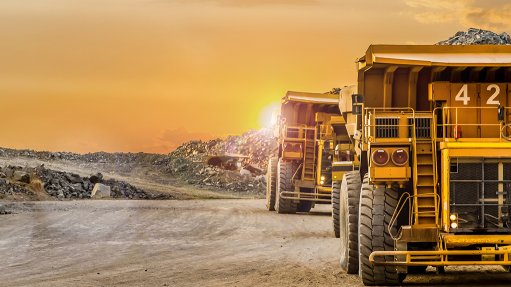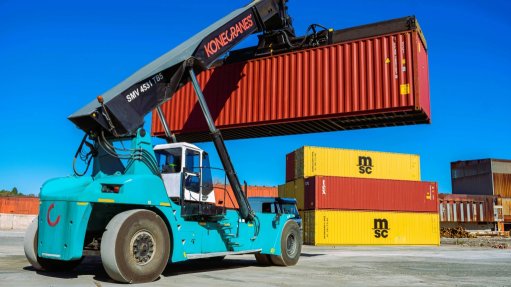Maersk tankers and competitors bet billions on ammonia fuel carriers
Some of the biggest names in shipping are betting billions of dollars on tankers to transport a type of ammonia that’s scarcely being produced today — wagering it will become integral to the industry’s decarbonisation drive.
Firms including Maersk Tankers, two Greek shipping magnates and two top Japanese lines, have collectively ordered $16-billion of vessels, many of which will be able to move ammonia, according to researcher VesselsValue.
Made by combining nitrogen with hydrogen, ammonia is viewed as pivotal to helping shipping wean itself off fossil fuels, particularly in its cleanest forms that have lower carbon-emissions. The fleet — which today mostly moves liquefied gas used in heating and petrochemicals — has mushroomed over the past few years because of booming US exports and surging Chinese demand. The addition of lower-carbon ammonia could create a new source of cargoes as soon as 2027.
“The next stage is the ammonia story,” said Kristian Sorensen, chief executive officer of BW LPG, the world’s top owner of very large gas carriers. “This is the story which people are building their ships against now. If it’s going to be for this decade or the next decade that needs to be seen.”
The need for low-carbon clean ammonia as a shipping fuel became more pressing this year as Houthi attacks on trade caused the merchant fleet to sail thousands of miles around Africa, rapidly driving up the industry’s already-vast emissions.
There are two environmentally friendly ways to make the fuel, mostly depending on how the hydrogen is produced. The greenest variety uses hydrogen from renewable energy sources, while the blue kind leans on natural gas and carbon capture. Both need vast amounts of energy.
Despite the hefty spending — the bulk of the new ships are due to join the fleet in two or three years’ time — it’s not yet clear that there will be a plentiful supply of low-carbon ammonia by the time they’re launched.
Production of green and blue ammonia is forecast to be 9.9-million tons in 2027, according to consultant Wood Mackenzie. To put that in context, it works out at about 200 000 bl/d — or 0.2% of current global oil demand.
It also equates to about 7% of demand for the current LPG fleet and will add to an expected expansion in conventional LPG cargo flows in the coming years. By 2027, the fleet of ships able to carry both cargoes is set to grow by about a quarter, assuming no old ships are retired, Clarkson Research Services data show.
In its own estimates of ammonia production for use in shipping and power generation, the International Energy Agency estimates that almost two thirds of the announced projects are in very early development stages, some of which haven’t even begun feasibility studies yet. That means there’s major uncertainty about whether production forecasts can be achieved.
FALL-BACK
If there’s teething trouble making clean ammonia, it may not be a disaster for shipping firms. Rising US fuel-export capacity and growing demand for gas for cooking have also had a hand in the orders.
VLGC markets have thrived over the past decade as surging US hydrocarbon exports and soaring Chinese petrochemical capacity created a burgeoning bilateral trade between the two nations.
Meanwhile, the IEA says that LPG is the main means by which hundreds of millions of people around the world will be able to cook with cleaner fuel by the end of this decade.
The result is an order book for big new vessels that is only eclipsed — as a proportion of the existing fleet — by container ships and liquefied natural gas carriers.
BIG NAMES
Among the companies with orders for ammonia carriers are TMS Cardiff Gas Ltd. and Capital Maritime, owned by Greek investors George Economou and Evangelos Marinakis respectively, Clarkson data show Japanese giants Mitsui OSK Lines and Nippon Yusen Kaisha also have orders for delivery in 2026 and beyond.
Oil product and chemical shipping company Maersk Tankers, whose parent company AP Moller Holding is the largest shareholder of container shipping giant AP Moller - Maersk A/S, has ten of the vessels on order. That would make it a significant participant in the nascent market.
Commodity trader Trafigura has some smaller ammonia carriers on order, while rival Gunvor Group has four VLGCs that will be built later this decade that will haul LPG.
But for the freight market to really strengthen, and for the industry to start combating its emissions, the clean ammonia trade must take off.
“The fleet that has been developed today has been comfortably absorbed,” said Jonathan Fancher, chief executive officer of Petredec, a trader of LPG and major owner of ships to move it. “The forward order book, whilst reflecting known, healthy LPG production growth and export expansion, does have some reliance on an ammonia trade.”
Article Enquiry
Email Article
Save Article
Feedback
To advertise email advertising@creamermedia.co.za or click here
Comments
Announcements
What's On
Subscribe to improve your user experience...
Option 1 (equivalent of R125 a month):
Receive a weekly copy of Creamer Media's Engineering News & Mining Weekly magazine
(print copy for those in South Africa and e-magazine for those outside of South Africa)
Receive daily email newsletters
Access to full search results
Access archive of magazine back copies
Access to Projects in Progress
Access to ONE Research Report of your choice in PDF format
Option 2 (equivalent of R375 a month):
All benefits from Option 1
PLUS
Access to Creamer Media's Research Channel Africa for ALL Research Reports, in PDF format, on various industrial and mining sectors
including Electricity; Water; Energy Transition; Hydrogen; Roads, Rail and Ports; Coal; Gold; Platinum; Battery Metals; etc.
Already a subscriber?
Forgotten your password?
Receive weekly copy of Creamer Media's Engineering News & Mining Weekly magazine (print copy for those in South Africa and e-magazine for those outside of South Africa)
➕
Recieve daily email newsletters
➕
Access to full search results
➕
Access archive of magazine back copies
➕
Access to Projects in Progress
➕
Access to ONE Research Report of your choice in PDF format
RESEARCH CHANNEL AFRICA
R4500 (equivalent of R375 a month)
SUBSCRIBEAll benefits from Option 1
➕
Access to Creamer Media's Research Channel Africa for ALL Research Reports on various industrial and mining sectors, in PDF format, including on:
Electricity
➕
Water
➕
Energy Transition
➕
Hydrogen
➕
Roads, Rail and Ports
➕
Coal
➕
Gold
➕
Platinum
➕
Battery Metals
➕
etc.
Receive all benefits from Option 1 or Option 2 delivered to numerous people at your company
➕
Multiple User names and Passwords for simultaneous log-ins
➕
Intranet integration access to all in your organisation


















